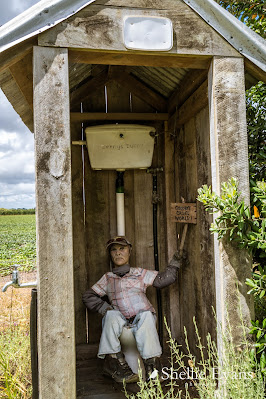Here's another Northland post for you -
 |
| Ripiro Beach |
 |
| Dargaville NZMCA Park |
We intended to exit at Glinks Gully as the tide wasn't suitable to carry on around the bottom of the Pouto Peninsula & exit at Pouto. We certainly didn't want to be trapped by the incoming tide on a remote beach or have to retrace our steps for many kilometres if we had had to turn around.
 |
| Baylys Beach entrance to Ripiro Beach |
Being a Saturday the beach was quite busy in both directions...
...with many people surfcasting and families relaxing in the dunes.
We passed quite a number of vehicles travelling up the beach in the opposite direction.
And passed several areas where people had driven in to launch their boats & then parked up as high as possible to avoid the incoming tide. Unless you're a local or a regular visitor it would be hard to know where the entry (or exit) points are along the beach. Unlike the entry points that have settlements surrounding them many of these ones are stream beds, a break in the high dunes or are forestry tracks.
We slowed to watch a group launch their boat into the surf. David had kittens watching the ute back deeper & deeper into the salt water.
As most New Zealanders know our West Coast beaches can be treacherous to fishers & boaties alike even on relatively calm days. We breathed a sign of relief as they made it out over the breakers.
Ripiro Beach is also known as the Shipwreck Highway, it's the graveyard of dozens of early shipwrecks, some that still show themselves after adverse weather events & others that have long been lost to the elements or buried deep in the shifting sands. I kept a watchful eye on the edge of the dunes as we cover the kms, just in case I managed to spot one. No such luck.
 |
| Glinks Gully |
We exited the beach at Glinks Gully, a small settlement of baches tucked below a scrubby ridge with fabulous sea views but little shelter from the wild west coast weather.
We drove along the 'waterfront' to a picnic area at the end of the short road to have afternoon tea before heading inland and up the peninsula back to Dargaville. We'll leave exploring the southern tip of the Pouto Peninsula for another time; there are huge sand dunes to explore, a campground & lighthouse to visit at the end which forms the northern entrance to the mighty Kaipara Harbour.
On the return journey near Tikinui, we followed a dead end road which indicated we'd see the Wairoa River. We sure did, stopping at an old abandoned wharf overlooking a wide expanse of river...
... and a rickety walkway over swampy ground to a fishing boat moored in the mangroves.
As is normal on our trips exploring, we stop so I can take photos of country churches to add to my collection and also any old or unusual buildings. There are several churches & this country hall along the peninsula's Pouto Road.
 |
| St Peters Church, Te Kopuru |
Our next stop in Te Kopuru is when I see this wonderful cottage garden full to the brim of every kind of fishing buoy imaginable; flotsam & jetsam collected over many years.
I'm sure this would be one of the most photographed houses in Northland if it was located on a main road and must give the owners much pleasure to see people stopping to view it. It reminded me of Owaka's Teapot World in the Catlins.
Not too far before Dargaville we passed Ernie's Park, I returned the next day to check it out (rather than foist it upon David after his long drive). There's a honesty box for your $2 at the entrance.
'Ernie's Park' is a long sliver of land located between a kumara farm on one side & a deep drainage ditch on the other from whence this family of grubby ducks emerged. They escorted me around the park for the rest of my visit.
It is a slightly run down park with a collection of kitsch, weird & slightly creepy displays, many items that have seen better days.
I did enjoy seeing the 'The Little Chapel', the smallest in NZ at 2x2 metres square, and now added to my church photo collection.
Ernie must have a fascination with 'long drops', there were several in the display.
I wasn't game enough to open the 'Weta Cave' door just in case there were weta in there or in fact it was another long drop with suitable mannequin ready to scare the living daylights out of me.
From the NZMCA Park I took a walk along the riverfront & then home back through town. There are many colourful boats moored at the boating club. In the photo below you can see the invasive Manchurian Rice Grass, a river pest plant in Northland that forms dense long-lived stands on land & water margins. It is thought the seeds arrived in ship's ballast in the early 20th century.
The Wairoa River is Northland's longest river at 150km and was once used by kauri & flax traders. It's tidal for much of its length with a muddy bottom hence it's colour as it drains & fills from the Kaipara Harbour.
Looking back along the waterfront past the Band Rotunda to the junction of the two rivers & the NZMCA Park to the left in the trees.
And the park from across the Kaihu River.
The next day we headed south again crossing the Wairoa River bridge on the way out of town.



























